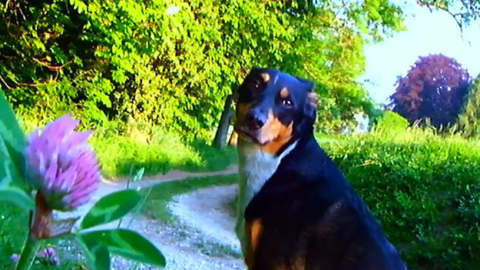By Paul Dallas in the November-December 2014 Issue
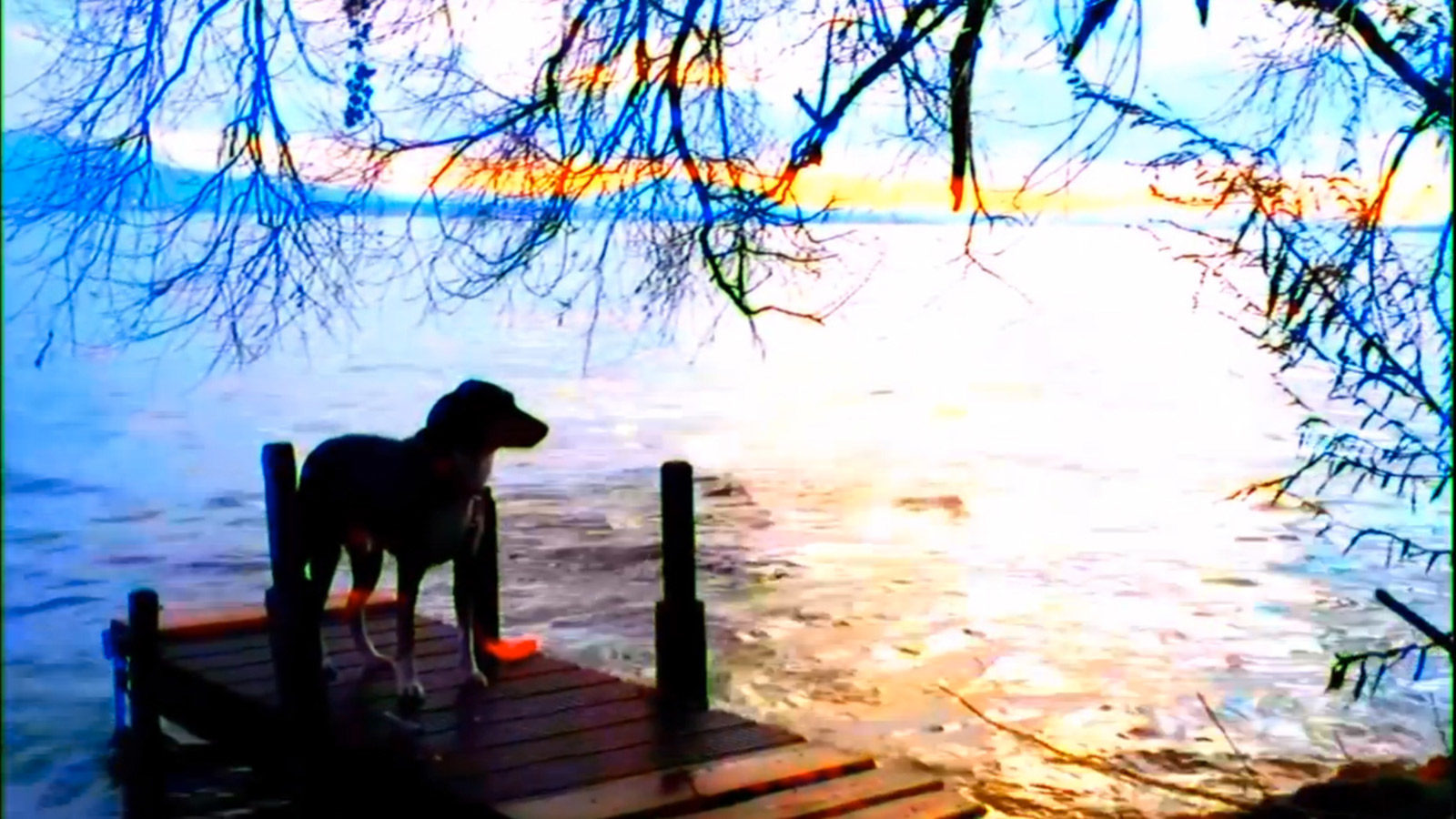
1 + 1 = 3
The extended cut: Goodbye to Language cinematographer Fabrice Aragno on his collaboration with JLG
Beginning as a location scout on Notre musique (04), Fabrice Aragno has collaborated on five projects with Godard, culminating in the Swiss filmmaker’s first and (rumor has it) last 3-D feature. In addition to shooting Goodbye to Language, Aragno also worked on the postproduction. The following interview took place in August at the Locarno Film Festival.
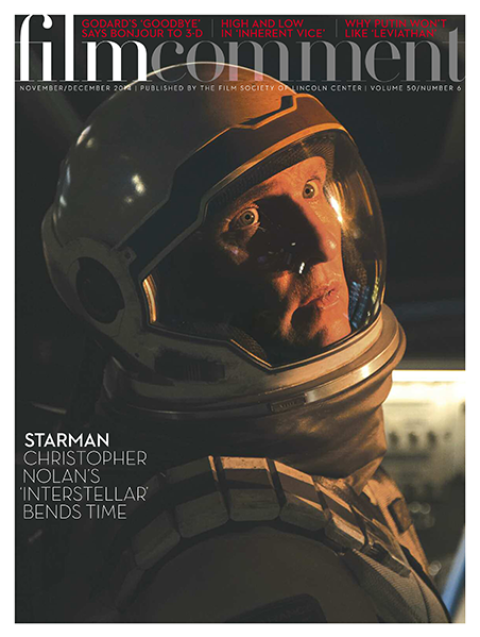
From the November-December 2014 Issue
Also in this issue
What was the nature of your collaboration during the shooting?
What is great about working with Jean-Luc is that sometimes he’s not there. He doesn’t ask you precisely what he needs. He may just ask for a shot of a girl running. On Film socialisme [10], we went on the Costa Concordia cruise twice. On the first trip we filmed all the scenes on the ship with the real passengers, and on the second trip we filmed the actors. Three days before leaving for the first trip, Jean-Luc said: “I’m not going. Go yourself.” We said: “But what are we going to shoot?” He said: “Do what you need. Do what you want. If I ask to get a shot of this or that, you will try to shoot as I want and it will be shit. Do as you feel.”
So he invites a degree of chance into the process. He wants to be surprised.
Yes, but most of all he does not want to take away our freedom. Just after we finished Film socialisme, he asked me to try shooting some things in 3-D. He never told me what to shoot. The first camera we tried was an expensive Panasonic camera that had built-in 3-D, in 2010, just after Avatar. The image was really sad. The depth was not interesting. We had had good luck with the Canon EOS 5D camera on Film socialisme, so we bought two of them and I built a rig out of wood and did lots of tests. The 3-D was much more rough and expressive. Normally in two-camera 3-D, the cameras are very close together to minimize the parallax. With the rig I built, the two 5Ds were about five centimeters apart, producing a much harder 3-D image.
I then built a rig to separate the images, which happens at several points in Goodbye to Language, and I first did a test with two friends. I had them stand together in the shot, and then I asked the boy to walk away, over to the kitchen. I followed him with the right camera, while the left camera stayed on the girl. You suddenly have two images, with the girl on the left, and the boy on the right, and your brain begins to mixes the two. Then I had the boy walk back to the girl, and the 3-D image returns. It hurts a bit when you watch it.
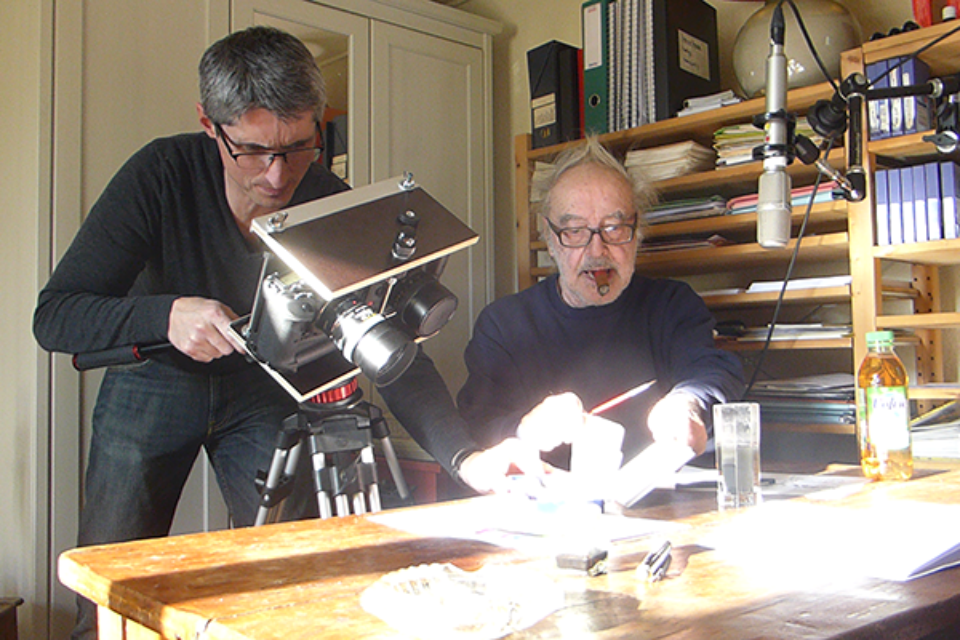
The film expands the possibilities of 3-D. How did you arrive at some of the astonishing imagery?
We weren’t interested in using 3-D as an effect. The film had to be about using 3-D to express new things. I did a 2-D version of the film that layers the two images like a double exposure, and I also did tests overlapping and combining 2-D and 3-D images. I wanted to “encrust” different images and work on different planes in space. I shot a 3-D portrait of a woman and sandwiched it between 2-D scans of paintings. I also mixed different 3-D images, such as a wide shot of a street with a close-up of a woman’s head. It was no longer two images together, but a reconstitution of the image. I showed Jean-Luc everything. Sometimes, he’d use the tests. He used many of them in The Three Disasters [Godard’s segment of the three-part 2013 omnibus film 3x3D].
For Goodbye to Language, I bought a little rig with me to the south of France on holiday last year to test two GoPro cameras for shooting 3-D and shot footage of my children running through olive trees at twilight. I showed the footage to Jean-Luc. Normally, he doesn’t say much, just, “Okay, thank you.” But this time he was very enthusiastic. “C’est magnifique! C’est très bien!” He asked for a DVD and said it might prove useful. Then I saw the footage in the final edit replacing a scene he had cut. And when I was in Umbria editing Pippo Delbono’s documentary Sangue, the light was very beautiful and so I shot footage inside and outside the house, which is also in Goodbye to Language. Of course I’m proud that he used my images, but I mention it because it’s an important part of his process. For Jean-Luc, shooting is just a way to collect material. He uses images I shot, images he shot, images from [other] films.
Goodbye to Language is punctuated by moments of almost ecstatic beauty. Are there any images that you especially connect with?
There’s a shot in the first part of the film with the first couple in the house. The woman comes down the stairs and begins to dress. It’s a reverse strip tease. She sits down on a sofa and buttons her shirt, and The Snows of Kilimanjaro is showing on a TV behind her. The only light we used was the lamp in the room. She usually stood, but for the last two takes, she sat on the sofa. It was not planned, but when she sat, her head blocked the lamp. Every time she moved her head, it created a lens flare and a difference in contrast. It’s really magic.
When Jean-Luc showed us an early edit of the film, he used an earlier take. I said: “You know, in takes seven and eight, she sits and it’s superb.” He said: “Thank you for telling me, but I think I’ll use the idea of a woman sitting in the second part of the film with the other couple.” Later, when he gave me a cut of the film and I was working on it alone, I saw that he had used the shot of her sitting after all. I was afraid if I said “thank you,” he would remove it. But when we were working on the final mix, he said: “See, I used your shot.”
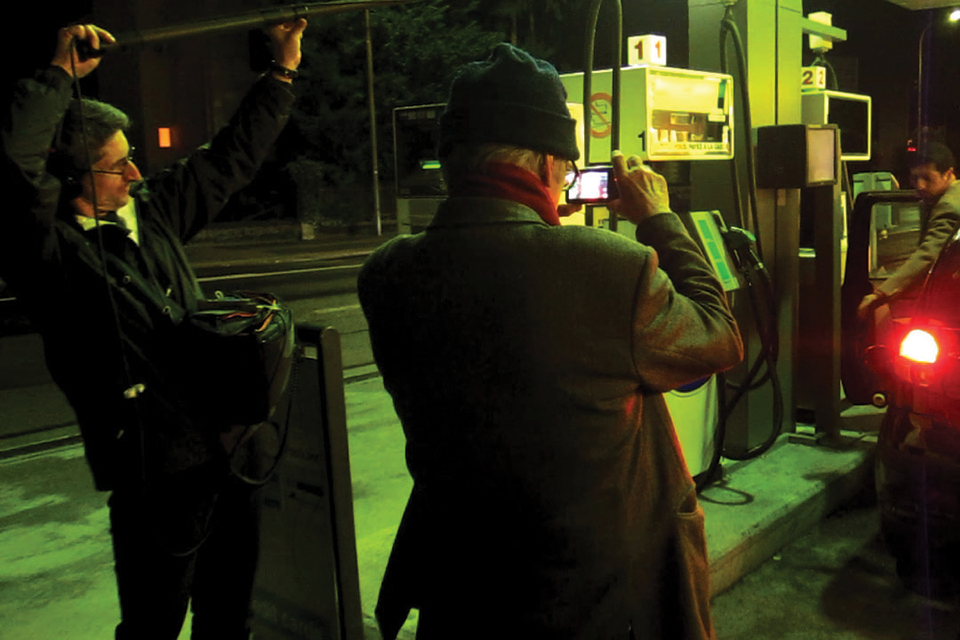
Godard has long been interested in the possibilities of video. Now that his films are entirely digital, what’s his editing process like?
He begins alone on videotape—he does not use computers, he edits in HDCAM, which means he can’t go back and insert a shot later. When he wants to insert something, he overlaps the images. When you edit in 35mm, you can anticipate what the final film will look like. In video, you see a TV, so there isn’t the same rapport. So Jean-Luc separates the images he’s editing from the editing console. He arranges the screen perpendicular to the console so that there’s nothing between him and the image. He has to turn away to make the edit. He decides edits very quickly. After he’s seen all the footage, he uses small thumbnails from photocopied or printed images of each scene, and makes books, gluing each image to a page. He also shot a lot of images himself with a small Sony camera filming his dog. There were four years of images. He gave me all of them, and I made a catalogue of still frames of each shot and gave them to him on DVD. Each week, he would get five or 10 minutes edited and show it to me and [assistant director] Jean-Paul Battaggia and ask for our reaction. When I was working on Film socialisme, I was still a little shy. We address each other as vous like old friends. But we also joke in text and SMS.
Tell me about your experience editing in 3-D.
For the first cut, I manually synchronized the left and right images from the original source for each shot—it took some time! Then I showed Jean-Luc a rough cut of the 3-D that had mono sound and very little color correction. He said: “Oh, it’s sad. Maybe if we’re not ready, we’ll just show a 2-D version in Cannes and make a 3-D version for Venice.” I suggested that we do a screening in Paris in a big cinema to decide which version to go with. I brought a 3-D version with stereo sound, a 2-D version in HD, and Jean-Luc’s HDCAM rough cut with time code. His tape edit was amazing, and I thought maybe we should stay with the rough cut. Jean-Luc is not scared for a film to be rough. I asked him but he said: “No, we are here to see the 3-D. Let’s see it.” We began the screening and he never stopped it. Then I asked him if we should play the rough cut, and he said okay, but after about 10 seconds he stopped the film and said: “The film will be in 3-D.”
This was March 18 [two months before the film’s debut at Cannes]. He had not seen the 3-D at all until then! After this, we worked on the final sound and picture edit together at his home. We call his studio “Chez les Anglais,” because during the war, when English aircraft were shot down by Germans, the pilots were sometimes protected by the French Resistance, who would hide them in cellars. There are no windows in the studio, so it’s like a basement. There is a big portrait of Hannah Arendt. Anyway, I set up three synchronized computers, ProTools for the Surround sound mix, DaVinci Resolve for color correction and 3-D managing, and Final Cut to play what was rendered by DaVinci synched with the ProTools sound mix. The idea was to mix, color correct, and edit at the same time in HD 3-D. We edited two minutes a session.
It was the film everyone talked about at Cannes. What it was like to debut there?
What is great about Cannes is that it’s in the spring. You work all winter on a film and you finish it when the buds are coming out and the trees are turning green. The screening for Goodbye to Language was incredible. The night before, you do a rehearsal with the projectionists and technicians. There’s no time during the day, so it happened at three or four in the morning. It’s night and everyone is coming back from parties. It’s strange. You enter the Grand Théâtre Lumière from the stage. We ran the test and the image was great, but the sound was very resonant. We built a very dynamic soundtrack for the film, with different voices and sounds on different tracks that move around the theater. I was worried it would be a mess. But when the film started, I really had the feeling that it entered the cinema and took over the whole space. It was like a big actor who commands a theater stage. After a few moments, it felt like I was back in the studio with Jean-Luc, but just with 2,700 seats around us.



